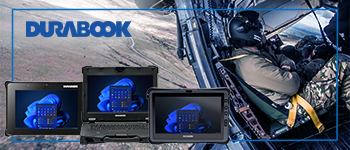Disruptive technology
David Brooker discusses the evolving IED threat and calls for greater partnership between governments and industry to ensure disruptor technology can meet the challenge
Improvised explosive devices (IEDs) continue to be the weapon of choice for the modern day terrorist; this is evident in the Middle East – and in particular Iraq and Afghanistan – but also in South America, across Europe and on the African continent. The aim of the terrorist has not changed over the years; their aim is still to cause destruction and disruption to a country’s infrastructure, its government or its armed forces. One aspect that has developed over the last decade, however, is the type of IED used – from traditional letter bombs to the roadside devices, car bombs and suicide vests of today.
In recent military campaigns there has been an increased emphasis on gathering evidence from an IED in order to create a profile of the bomber; this allows us to understand who they are and how they constructed their devices. But if the device is made safe with a standard disruption method using the most powerful disruptors, the process will will leave little or no evidence for the forensic teams to work with. This is why choosing the correct disruption tool is vital to the fight against the bomb makers.
While methodology and advances in technology have changed the look and impact of IEDs, the fundamental electro-mechanical systems remain the same as they have been for decades. The security industry has therefore managed, thus far, to provide the necessary IED disposal (IEDD) capability to match this threat. Throughout the 1970s, 1980s and 1990s, the security industry has provided tools to deal with threats such as letter, briefcase and suitcase-type devices. These devices were normally left in public areas to cause disruption to the country’s infrastructure and interrupt the general public’s everyday routine. More recently, IEDs have been found to contain military ordnance such as landmines or projectiles as the main charge, allowing these devices to be better concealed. The aim of the terrorist deploying them is often to cause significant injury, death and destruction.
Currently, one of the major considerations for disruptor manufacturers is not only the type and size of the IED, but the amount of collateral damage to the surrounding area that may be caused through the disruption process; this is essential to minimise the impact of the disruption, and needs to be taken into account. This is particularly important when dealing with urban operations. Other factors that must be taken into account are the growing requirement for integration with remotely operated vehicles (ROVs), human factors and, critically, operator safety.
The main categories of disruptors available today are: conventional, recoilless, disposable, lightweight, stand back attack, and those that can also double up as de-armers. The type and size of the IED will determine the size of disruptor selected by the IED operator. If in a confined space or when working within a safe area, they need to keep the disruptor from recoiling. In this case, the operator will need to select a recoilless version, whether it be totally recoilless, or a disruptor with a recoil reducer or retarded system. Disruptor systems with recoil reducers often make the disruptor heavier, more cumbersome to carry and more difficult to mount on ROVs. Another negative of a recoiling disruptor is the effect the reducer has on the arm of the ROVs, as it can severely wear this down.
Disruptors with retard systems are often lighter than recoil reducer systems, but the disruptor will still leave the stand or ROV and possibly cause damage or land in un-cleared areas, putting the operator in further danger during recovery. Disruptors designed with built in recoil reduction/illumination systems are normal the lightest option for the operator, and can be fired from ROV without damaging or leaving the ROV. Care must be taken with all disruptors, be they recoil or recoilless, to make sure they do not cause damage to the ROV through any object which is ejected from the rear whether water, parachute or the disruptor itself. Many of us in the EOD community have seen that using conventional recoiling disruptors – even on large ROVs with recoil reduction systems built in – can still cause significant and costly damage to the ROV and render it unusable for a period of time.
As the IED threat continues to grow, and with it the demand for more mobile operators to support fighting forces and SWAT teams, EOD operators are more likely to be unsupported and forced to carry their own equipment during operations. This makes it highly desirable that the disruptors deployed are lightweight and easily transportable while retaining proven disruption performance. At the same time, the use of small, compact and dextrous ROVs has become more common, meaning the disruptor must not only be light, but also ROV friendly in operation. They must offer a high level of recoil reduction (>99.5 per cent), and any material or fluid ejected to effect recoil compensation must be dispersed quickly or lightly and softly to minimise the possibility of causing damage to the ROV.
There are a number of systems available, but few offer all the desirable features of proven performance: lightweight, high levels of recoil reduction and ROV friendly operation in one package. Those that do, however, can offer scientifically and field-proven disruptive performance. Lightweight titanium versions offer weight savings in excess of 50 per cent when compared to other products with comparable performance, recoil reduction is typically greater than 99.9 per cent and the use of soft rubber seals and fast dispersing water in the recoil compensation systems make them ROV friendly. The best models also feature a picatinny rail as the integration method of choice, which gives a universal method of integration with a number of ROVs small or large.
A disruptor can no longer just project water alone for IED/EOD disruption; it needs to have the capability to provide a stand back attack function to help safeguard the operator and aid in the disruption of IEDs in confined or difficult-to-access places. Increasingly in the world of defence and security cuts, the need to safeguard the expensive ROV is paramount. Risks to the ROV can also be alleviated by stand back attack capability.
Stand back attack can be accomplished in many ways, including by using gels to form a jet coherent over a longer distance than water or by firing such projectiles as elastomeric (SPLAT) rounds, piercing rounds and metal slugs. Additionally, small disruptors such can be fitted with flying scalpels for remote cutting. Stand back attack relies on one overarching feature: aiming. A manufacturer may have the most efficient disruptor/de-armer on the market, but if their disruptor is not going to hit the IED from a distance, all of the effort and calculated risk to disrupt the IED has been in vain. Aiming can be achieved in a variety of ways similar to other weapons through optic sites, lasers and the use of cameras.
As the methodology of IEDs is forever changing, so does the EOD industry; our challenge is to second guess and pre-empt the trends in IED development. The sharing of information regarding the development of IEDs and disruptors can be considered a sensitive area by all stakeholders, including governments, the security industry and individual companies. This can be a barrier to swift deployment in the disruptor industry, but as partnerships develop between governments and industry, these barriers are beginning to be overcome. Furthermore, with the increasing numbers of IED and EOD operators with operational experience now ending their careers as operators and moving into the security industry as advisors, trainers and consultants, the industry is in a good place to meet the ever-growing use of IEDs worldwide.
Overall, companies within the IED sector with a proven track record and a history of professionalism within the industry can successfully anticipate the challenges in the ever-evolving IED world. This is evidenced in the high quality product range of available of disruptors and associated tools in the marketplace today.
David Brooker is AB Precision’s Sales Manager for the United Kingdom and The Americas. He has worked for the company for more than seven years within their EOD and Remote Vehicles business unit. Previously he served 22 years in the British Army, the majority of which was spent as an EOD operator within Europe, the Middle East and Central America.









